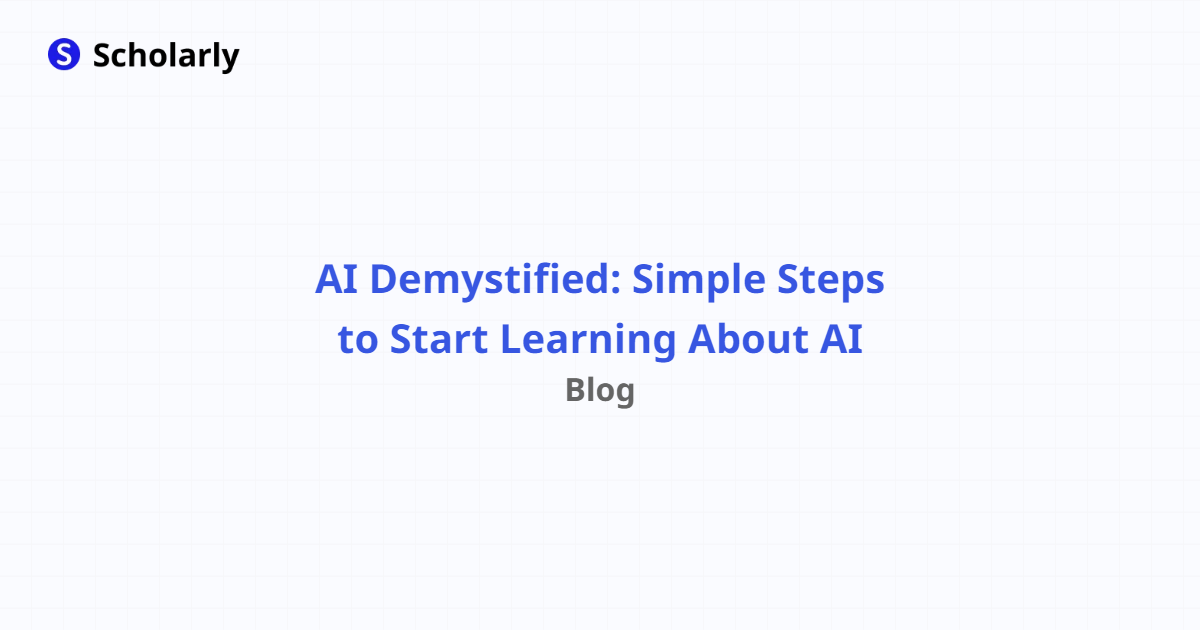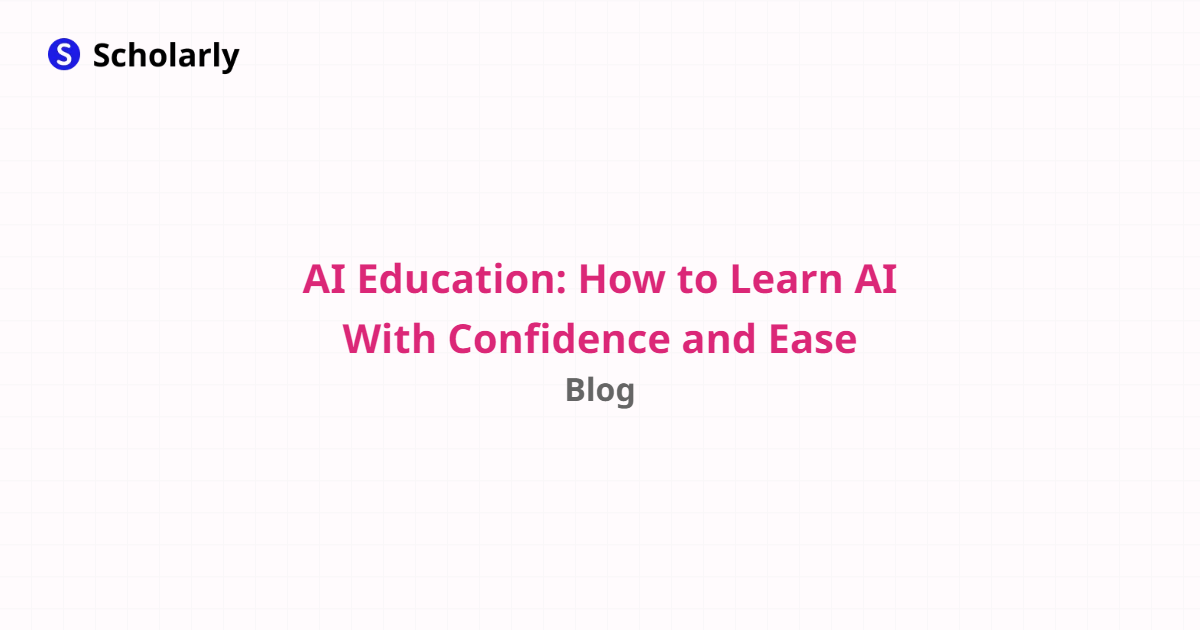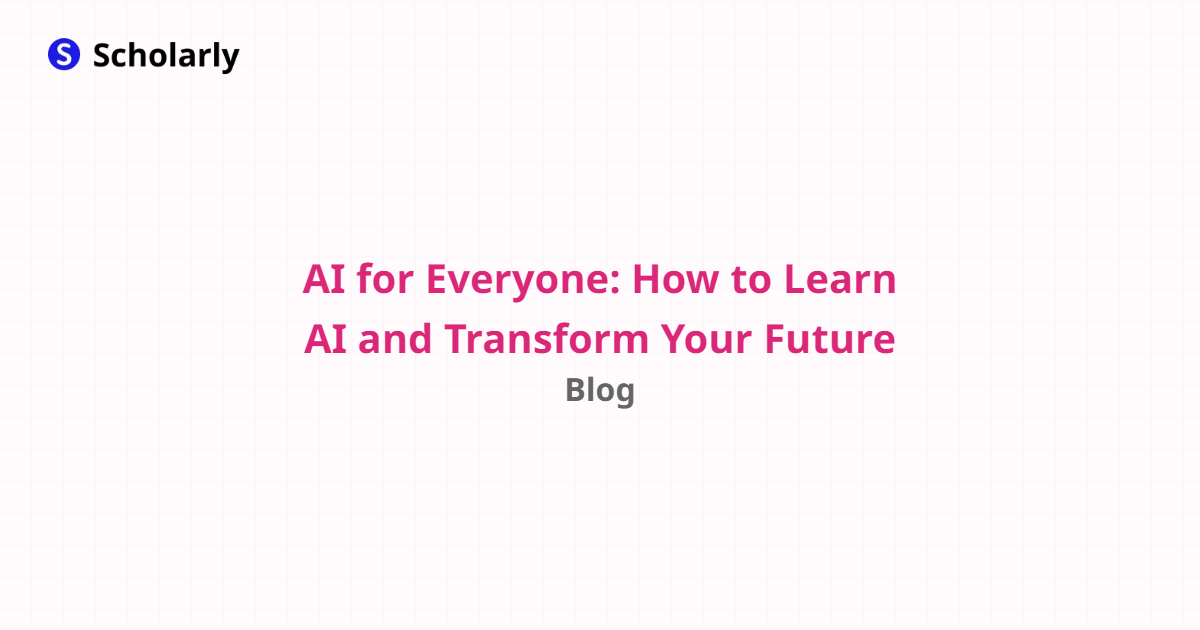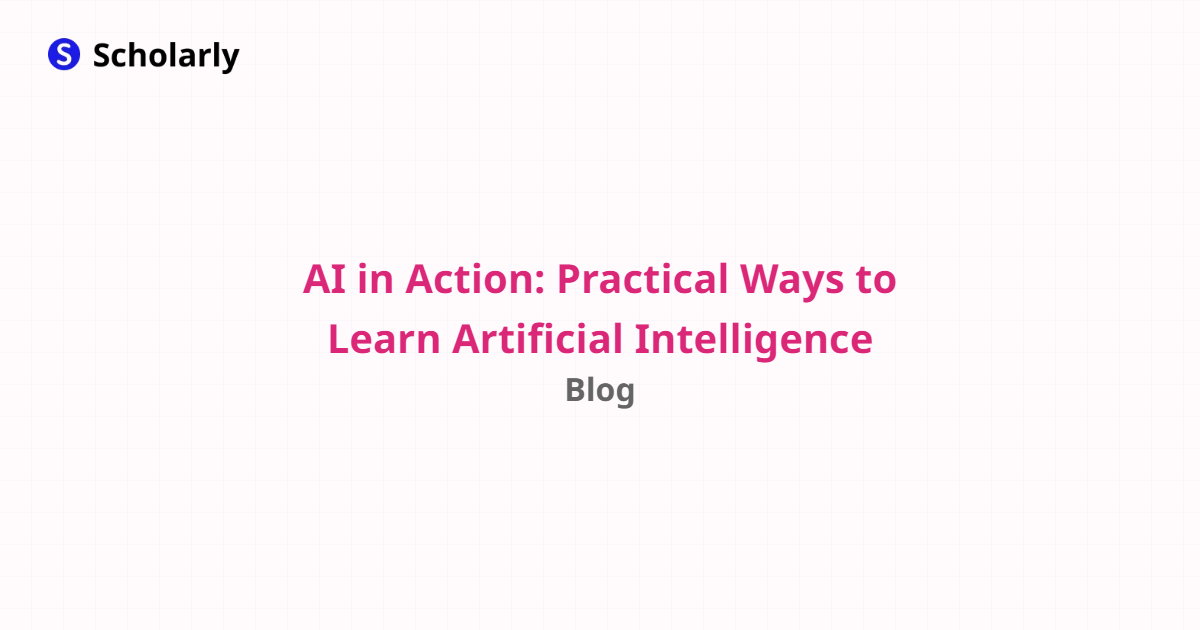Published in General
The Future of Learning: How AI-Powered Textbooks are Revolutionizing Education
By Scholarly
8 min read
Introduction
In the rapidly evolving world of education, AI-powered textbooks are emerging as a game-changer. These innovative tools combine the power of artificial intelligence (AI) with traditional textbooks to create a truly immersive learning experience for students. By harnessing the potential of AI, these textbooks offer personalized learning, interactive content, and real-time feedback. In this article, we will explore the history, benefits, and future of AI-powered textbooks, and how they are revolutionizing education.
History
Past State
In the past, traditional textbooks have served as the primary source of information for students. While they provided valuable knowledge, they lacked interactivity and personalization. Students had to rely on static content and one-size-fits-all approaches to learning. Although technology brought digital textbooks, they were merely digital replicas of their printed counterparts. They lacked the transformative qualities that AI-powered textbooks offer today.
Current State
The current state of AI-powered textbooks is marked by advancements in natural language processing (NLP), machine learning, and data analytics. These technologies enable textbooks to adapt to each student's individual needs, providing personalized content, interactive exercises, and targeted feedback. AI-powered textbooks also incorporate multimedia elements such as videos, animations, and simulations, making learning more engaging and immersive.
Future State
In the future, AI-powered textbooks hold immense potential to further revolutionize education. With ongoing developments in AI and machine learning, these textbooks will become even smarter and more adaptive. They will have the ability to understand individual learning patterns, identify knowledge gaps, and provide tailored recommendations. AI-powered textbooks will also incorporate emerging technologies such as virtual reality (VR) and augmented reality (AR), creating truly immersive learning experiences.
Benefits
AI-powered textbooks offer a wide range of benefits for students, teachers, and the education system as a whole. Let's explore some of these benefits:
Personalized Learning: AI-powered textbooks adapt to each student's learning style, pace, and preferences. They provide personalized content and recommendations, ensuring that students receive the right information at the right time.
Interactive Content: These textbooks include interactive exercises, quizzes, and simulations that actively engage students in the learning process. This interactivity enhances retention and understanding of the subject matter.
Real-time Feedback: AI-powered textbooks provide instant feedback on students' performance, highlighting areas of improvement and offering suggestions for further study. This feedback helps students track their progress and make necessary adjustments.
Access to Resources: AI-powered textbooks have the capacity to incorporate a vast array of digital resources, including videos, articles, and online platforms. This access to supplementary materials enriches students' learning experience and provides them with additional sources of information.
Time and Cost Savings: These textbooks eliminate the need for physical resources, such as printed textbooks and workbooks. They are accessible digitally, reducing costs for both students and educational institutions.
Significance
The significance of AI-powered textbooks lies in their potential to revolutionize the education system. By personalizing learning, enhancing interactivity, and providing real-time feedback, these textbooks address the diverse needs of students. They promote a more inclusive and engaging learning environment, where students can develop critical thinking, problem-solving, and collaboration skills. AI-powered textbooks also enable teachers to focus on individualized instruction and offer support where it is needed the most.
Best Practices
To fully leverage the benefits of AI-powered textbooks, here are some best practices to consider:
Embrace Personalization: Encourage students to explore the personalized features of AI-powered textbooks and adjust their learning settings accordingly. This will enable them to create a learning environment that suits their individual needs.
Encourage Interactivity: Promote active participation and engagement by incorporating the interactive elements of AI-powered textbooks into classroom activities. Encourage students to complete exercises, take quizzes, and participate in discussions.
Provide Guidance on Feedback: Help students understand the importance of feedback and how they can use it to improve their learning. Teach them how to interpret feedback and develop strategies to address areas of improvement.
Promote Collaboration: AI-powered textbooks offer collaborative features that enable students to work together on projects and assignments. Encourage group work and foster a collaborative learning environment.
Stay Updated: Continuously explore new features and updates in AI-powered textbooks to maximize their potential in the classroom. Attend workshops, conferences, and webinars to stay informed about the latest advancements.
Pros and Cons
Like any technological innovation, AI-powered textbooks have their pros and cons. Let's take a closer look:
Pros:
Enhanced Learning Experience: AI-powered textbooks provide a more interactive and immersive learning experience, promoting better understanding and retention of the subject matter.
Personalized Learning: These textbooks adapt to each student's needs, offering personalized content and recommendations. This individualized approach enhances learning outcomes.
Real-time Feedback: AI-powered textbooks provide instant feedback, enabling students to track their progress and make necessary adjustments.
Access to Resources: These textbooks incorporate a wide range of digital resources, expanding students' access to supplementary materials.
Cost and Time Savings: AI-powered textbooks eliminate the need for physical resources, reducing costs for students and educational institutions.
Cons:
Technological Dependence: AI-powered textbooks require access to technology and digital devices. This dependence on technology may limit access and create inequities for students in underserved communities.
Learning Style Compatibility: Not all students may benefit from the personalized learning approach of AI-powered textbooks. Some students may prefer more traditional methods of instruction.
Data Privacy Concerns: AI-powered textbooks collect and analyze data on students' learning patterns. Privacy concerns may arise regarding the storage and usage of this data.
Implementation Challenges: Integrating AI-powered textbooks into the education system requires adequate infrastructure, training, and support for teachers and students.
Limited Subject Coverage: Currently, AI-powered textbooks are more prevalent in certain subjects or grade levels. The availability of these resources may be limited in other areas.
Comparison
There are several AI-powered textbook platforms available in the market today. Let's compare some of the popular ones:
Scholarly: Scholarly is an AI-powered textbook platform that offers a range of features, including personalized learning, interactive content, and real-time feedback. It incorporates AI techniques for natural language processing and machine learning to provide a comprehensive learning experience. Sign up for Scholarly to explore its capabilities.
SmartText: SmartText is an AI-powered textbook platform that focuses on personalized learning and adaptive content. It uses AI algorithms to analyze students' performance and provide tailored recommendations.
AI-Textbooks: AI-Textbooks is an AI-powered platform that aims to transform traditional textbooks into adaptive and interactive learning resources. It uses AI techniques for content recommendation and personalized assessments.
AdaptivText: AdaptivText is an AI-powered platform that adapts to students' learning needs and provides interactive content. It incorporates AI techniques for natural language processing and data analytics.
Methods
To effectively integrate AI-powered textbooks into the classroom, consider these methods:
Teacher Training: Provide professional development opportunities for teachers to familiarize them with AI-powered textbooks and enhance their pedagogical approach.
Pilot Programs: Implement pilot programs to assess the effectiveness of AI-powered textbooks in specific subjects or grade levels. Gather feedback from teachers, students, and parents to inform implementation strategies.
Collaborative Partnerships: Collaborate with educational technology companies and researchers to stay at the forefront of AI-powered textbook development.
Continuous Evaluation: Regularly evaluate the impact of AI-powered textbooks on student learning outcomes and make adjustments as necessary.
Feedback Loop: Establish a feedback loop with students to gather their insights and suggestions on improving the design and functionality of AI-powered textbooks.
AI Impact
The impact of AI on education extends beyond AI-powered textbooks. Let's explore some other AI applications in education:
AI Applications
AI has the potential to transform various aspects of education, including:
Personalized Tutoring: AI-powered tutoring systems can provide personalized instruction and support to students, offering tailored explanations and practice exercises.
Automated Grading: AI algorithms can automate the grading process, providing efficient and timely feedback to students while reducing the workload for teachers.
AI Techniques
Natural Language Processing: AI techniques, such as natural language processing, enable AI-powered textbooks to understand and interpret students' written or spoken responses.
Machine Learning: Machine learning algorithms analyze student data to identify patterns and make predictions, supporting personalized learning and adaptive instruction.
AI Benefits
The benefits of AI in education include:
Improved Learning Outcomes: AI-powered tools enhance learning outcomes by providing personalized instruction, instant feedback, and access to a wealth of educational resources.
Efficiency and Productivity: AI automates administrative tasks, such as grading and data analysis, freeing up teachers' time to focus on instruction and student support.
AI Challenges
The challenges of implementing AI in education include:
Ethical Considerations: AI raises ethical concerns regarding privacy, bias, and accountability. It is important to develop guidelines and policies to address these concerns.
Equity and Accessibility: Access to AI-powered tools may be limited for students in underserved communities, exacerbating existing educational inequities.
Potential Online Apps
Explore these potential online apps that complement the use of AI-powered textbooks:
Kahoot!: Kahoot! is an interactive learning platform that offers quizzes, games, and discussions. It can be used alongside AI-powered textbooks for further engagement and assessment.
Quizlet: Quizlet is a study platform that allows students to create flashcards, quizzes, and study sets. It can be integrated with AI-powered textbooks to reinforce learning concepts.
Brainscape: Brainscape is a flashcard app that utilizes spaced repetition to enhance learning and retention. It can be used in conjunction with AI-powered textbooks for effective review.
Duolingo: Duolingo is a language-learning app that uses gamification and AI techniques to deliver interactive lessons. It can supplement AI-powered language textbooks.
Edmodo: Edmodo is a social learning platform that connects teachers, students, and parents. It can facilitate collaborative learning alongside AI-powered textbooks.
Scholarly: Scholarly is an AI-powered textbook platform that offers a range of features, including personalized learning, interactive content, and real-time feedback. Sign up for Scholarly to explore its capabilities.
Conclusion
The rise of AI-powered textbooks marks a significant shift in the field of education. These innovative tools offer personalized learning, interactive content, and real-time feedback, transforming traditional textbooks into immersive learning experiences. As AI continues to advance, so will the capabilities of these textbooks. The benefits of AI-powered textbooks, including personalized learning, interactive exercises, and access to resources, make them a valuable asset in the education system. However, it is important to address the challenges of technological dependence, data privacy, and equitable access. By embracing best practices, exploring AI applications, and integrating complementary online apps, educators can harness the full potential of AI-powered textbooks and pave the way for a future of enhanced learning.




